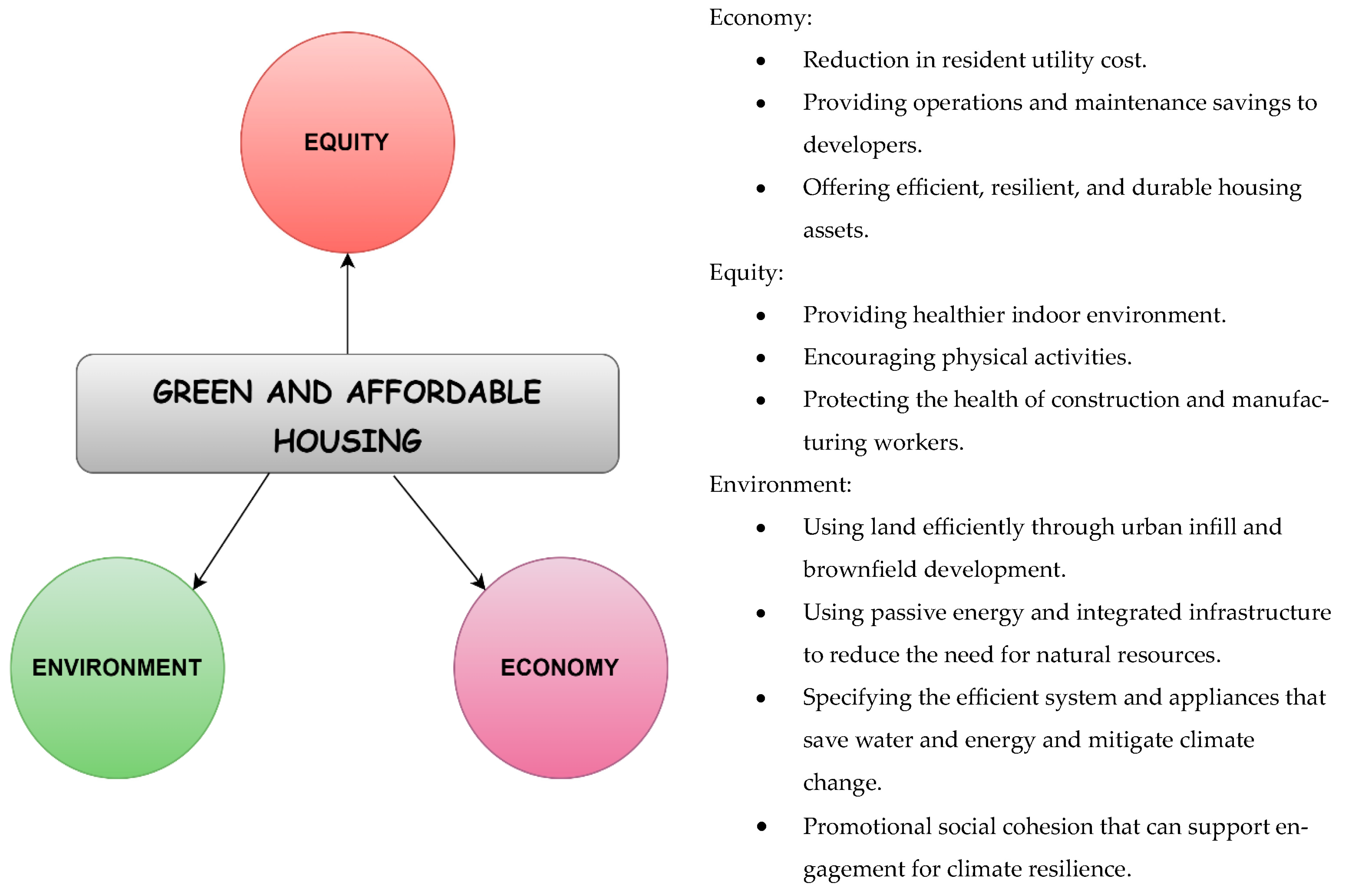Affordable, Sustainable Housing Can Bring the Green Deal Home
Introduction
Affordable housing is increasingly recognized as a critical component in addressing both social equity and environmental sustainability. The integration of green building practices into affordable housing initiatives not only provides safe and secure homes for low-income populations but also contributes to broader climate goals. This summary explores the intersection of affordable housing and sustainability, emphasizing the innovations, impacts, and frameworks that support this dual objective.

The Need for Affordable Sustainable Housing
The global demand for affordable housing is pressing, particularly in regions like Africa and Asia, where millions live in substandard conditions. Buildings are responsible for approximately 37% of energy-related greenhouse gas emissions, highlighting the urgent need for sustainable housing solutions that can mitigate climate change while addressing housing shortages. Sustainable and affordable housing is defined as resilient structures that adapt to climate change, promote economic accessibility, and enhance quality of life without compromising environmental integrity.
Defining Green Affordable Housing
Green affordable housing refers to reasonably priced dwellings that incorporate sustainable features, such as energy efficiency and environmentally friendly materials. This approach aims to reduce the long-term costs associated with energy and maintenance while improving the overall health and well-being of residents. The concept is underpinned by the idea that sustainable design can lower utility costs, improve indoor air quality, and ultimately lead to healthier living environments for low-income households.
Innovations in Financing Green Affordable Housing
One of the key challenges in expanding green affordable housing is the lack of financial resources available to developers and prospective homeowners. Innovations like the Green Affordable Housing Finance model aim to bridge this gap by incentivizing local lenders to finance both the construction and purchase of affordable green homes. This model employs construction and mortgage loan guarantees to create a self-sustaining ecosystem that supports climate-smart housing development.
Key Components of Green Affordable Housing Finance
- Enabling Environment Facility (EEF): This facility provides targeted construction finance and technical assistance to help local developers establish credibility and bankability.
- Guarantee Facility: This facility de-risks construction loans issued by local lenders, facilitating the development of certified green affordable homes.
- Alternative Credit Assessment: By supporting local lenders in adopting alternative credit assessments, more individuals with low or informal incomes can access mortgages, thereby expanding credit availability.
Impact on Communities
The potential impact of integrating sustainable practices into affordable housing is significant. During its initial pilot phase in Kenya, the Green Affordable Housing Finance initiative is expected to mobilize $37 million in lending activity for green homes. Upon scaling up, it could support over $400 million in local private loans over 15 years. This financial backing is crucial for creating resilient communities capable of withstanding climate-related challenges such as extreme weather events.
Benefits of Sustainable Housing
- Economic Security: Sustainable homes reduce utility costs and provide better predictability in spending on services.
- Health Improvements: Improved indoor air quality can lead to better health outcomes for residents, particularly those from low-income backgrounds who often face health disparities.
- Environmental Benefits: By reducing energy consumption and utilizing sustainable materials, these homes contribute to lower carbon emissions and less environmental degradation.
Challenges Faced
Despite the clear benefits, several challenges hinder the widespread adoption of green affordable housing:
- Upfront Costs: The initial investment required for green building practices can deter developers from pursuing sustainable options.
- Urban Greening Concerns: The phenomenon known as “green gentrification” can lead to increased property values in previously affordable neighborhoods, displacing low-income residents.
- Financing Barriers: Many traditional financing models do not adequately support innovative green projects due to perceived risks or lack of understanding of long-term benefits.
Policy Recommendations
To overcome these challenges and promote the development of sustainable affordable housing, several policy recommendations have been proposed:
- Incentivize Green Building Standards: Governments should implement policies that require or incentivize green building practices in new construction projects.
- Enhance Financial Support Mechanisms: Expanding access to grants and low-interest loans for developers focusing on green affordable housing can stimulate growth in this sector.
- Promote Community Engagement: Involving communities in planning processes ensures that developments meet local needs while fostering a sense of ownership among residents.
Conclusion
The integration of sustainable practices into affordable housing represents a vital strategy for addressing both social inequities and environmental challenges. By fostering innovative financing mechanisms and supportive policies, stakeholders can create resilient communities equipped to handle future challenges while ensuring that all individuals have access to safe, healthy, and sustainable living environments. As initiatives like Green Affordable Housing Finance demonstrate success in pilot programs, there is potential for broader application across various regions facing similar housing crises.Through collaborative efforts among governments, financial institutions, developers, and communities, the vision of affordable sustainable housing can become a reality—bringing both economic stability and environmental stewardship home.
Also Read: French Social Housing in an International Context
